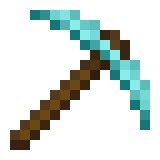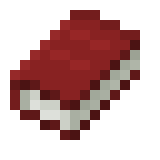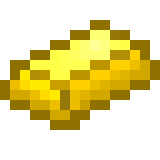Reviewer: John B
Developer: Event Horizon
Publisher: Digerati
Category: Strategy, Role-Playing
Release Date: 6.25.2020
Price: $24.99

Watch the Trailer
Buy Tower of Time from the Nintendo Switch eShop here.
I’ve never said no to exploring towers while fighting monsters and looting anything in sight, so right off the bat Tower of Time sounded like it would be right up my alley. When I further discovered that it was an intriguing mix of a dungeon-crawling RPG with a real-time (ish) strategy game, I was even more interested in trying it out. It’s been out for a few years on PC, but the devs have made the wise decision to give the Switch a go and see what happens. Certainly it’s got plenty of redeeming qualities, but its PC pedigree is a little too obvious, and Tower of Time sometimes proves to be an awkward fit for the Switch. Let’s dig in and I’ll tell you what I mean.

The Artara Deal
The player character starts out as a youth from the magical world of Artara. As a child, you find a magical tower near your village on the outskirts of the largest human kingdom. A mysterious entity contacts you when you approach a crystal throne, and obscures your memories of visiting the tower; all you remember is that you have to become stronger and return when you’re an adult. The world pretty much falls to ruin over the course of your life; when you return to the tower after distinguishing yourself as a warrior and/or strategist, the sun has basically disappeared and dark forces are overrunning the world. You and your companions arrive to seek out the power you believe the tower to hold; perhaps even power enough to drive back the forces of darkness and restore the world to its former glory. Or perhaps you have other plans entirely.
Either way, you send your ever-growing band of faithful compatriots into the depths of the tower – which are actually the heights of the tower, since it somehow is upside-down – in search of treasure and power. You sit on the crystal throne the whole time, because it connects you with the tower and allows you to give better tactical directions. It’s a fairly standard dungeon-crawling storyline setup – magical dungeon, hidden power, blah, blah, blah – but I’ve always believed that execution trumps originality every day of the week. And Tower of Time’s execution is, well, mixed, from both a story and gameplay standpoint.

Baldur’s Gate It Ain’t, But It Ain’t Not That Either
The story unfolds mostly via dialogue boxes, with a few video cutscenes thrown in for good measure. The game’s writing is kind of uneven – not bad, really, just sort of a mix of bland, good, and underdeveloped. Many dialogue scenes are written entirely as dialogue, whereas similar games like Baldur’s Gate or Pillars of Eternity mix dialogue with richly descriptive narration that give their text the feel of an epic novel. With little in the way of voiceover or any sort of emotive character animation, the purely dialogue exchanges can feel flat compared to Tower of Time’s genre-mates. There are some dialogue exchanges that feature richer narration in addition to character dialogue and the lore pieces like journal entries are always well-executed, but the majority of the game’s narrative is driven forward by writing that just falls a little flat to achieve the epic feel to which it aspires.

Ascension By Descent
The main focus of Tower of Time is dungeon exploration. The exploration elements are fairly standard, Diablo-style third-person exploration mechanics. You guide the leader of your group of up to four active explorers, and the rest of the team follows behind. You’re trying to figure out a way through or around magic barriers and mobs of monsters to ascend/descend to the next level of the tower. You find all the usual good stuff; equipment, money, and magic tomes and scrolls. There are teleportation stones scattered throughout each level of the dungeon that cut down the amount of backtracking required, which is great; I hate backtracking. There isn’t a whole lot of it required to begin with, either, so I count that as a major advantage.
You’ll encounter two kinds of magic scrolls as you explore the tower. One will unlock special enchantments that you can apply to your weapons and armor in the armory when you visit your base. The other type will either grant a permanent increase and/or decrease to a character’s stats – they tell you up front what they do, so you can way the pros and cons before making a decision. Fountains are similar to the second type of scrolls, except they’re either only positive or only negative and you don’t know ahead of time what a fountain will do. Luckily, the good fountains and the bad fountains are pretty clearly definable by their appearance. If it looks poisonous or like it’s crackling with bad vibes, you probably shouldn’t drink from it – or you should at least save before trying it.

Tactical Decisions
When you encounter an enemy on the exploration map, your party will be transported to a separate battle area where combat takes place. It’s… a little jarring, since the battlefields bear no resemblance to the area around where the enemy was encountered, but sure. Whatever. Separate battlefields are an RPG staple, right? The more annoying thing is the loading screens before and after every single fight. The combat itself is a blend of real-time and turn-based, somewhat like the classic Baldur’s Gate games. You can pause the game to issue orders and assess the battlefield at your leisure, which became easily the most vital aspect of my strategic planning. As you progress farther into the game, more enemies appear at once in each battle – far too many to keep track of in real-time. Pausing every ten seconds was the only way I could stop myself from feeling overwhelmed after a while. Pausing the game to try and herd enemies together and hit them with an area attack or just choke them off from being able to get at your weaker ranged characters was my basic plan of attack.
There are a few different types of battles to keep things fresh. The standard battles have a set number of enemies that pop out of entry points, and you fight until you kill everything in sight. Portal battles have a portal spewing out enemies at set intervals, and you have to destroy the portals and all the summoned enemies. Mana orb battles have you defending mana orbs on the map – I never really got why? There didn’t seem to be any bonuses for saving them or point to them being there. I actually found boss fights to be a little easier than the others. Generally, there was only one boss to fight, and while they had a ton of HP, it was a lot easier to only have to focus on one enemy than a mob of like twenty.
My biggest issue with the game’s combat is that the game’s PC pedigree really shows through, and as a result the control layout is a little funky. I generally got the impression that this game was really meant for a mouse and keyboard, not for a controller. Tower of Time uses a different button layout than most games during combat; you use the trigger to confirm orders instead of the ABXY buttons, which is what you use during the game’s exploration phase. It’s kind of jarring, and it definitely takes some getting used to. It seems like a weird choice to get away from what is basically the universally accepted method of laying out a console controller. But whatever. I got over it after a couple hours.

The Blueprints to a Better Party
At any time, you can teleport yourself back to the town outside the base of the tower that serves as your base of operations. When you reenter the tower, you can either start where you left off or at any of the teleportation stones you’ve discovered. The town screen has several different buildings displayed that you can use to upgrade your characters. During your journeys in the tower, you’ll occasionally come across blueprints that can be used to upgrade these buildings’ capabilities. The barracks is where you can buy new levels for your characters; each character is tied to a certain building in town. Their maximum level is determined by the level of their class building. Leveling up grants your characters both attribute points and ability points, which can be spent at the keep in town or at any time in the character menu, where you can also equip weapons, armor and accessories.
The town has an armory where you can forge new equipment for your characters from special materials found in the tower or from breaking down unwanted equipment. Forged weapons are seldom significantly better than weapons of similar quality found in the tower, but if you have enough high quality materials you can forge better equipment early on if you’re not finding enough equipment to fully outfit everyone in your party. This is especially useful when you get a new party member and don’t have a lot of spare equipment. Finally, the town has a library, where you can see a summary of the story so far, a list of your current and finished quests, and a bestiary.

Switch Port Problems
As is kind of a trend I’ve been noticing with Switch ports, the graphics seem to be a step down from what the game looks like on other platforms. The YouTube videos I’ve watched of the game running on the PC look much better than what I saw on the Switch; undocked mode especially seemed to lose a lot of graphical quality. Also, the mouse icon in undocked mode is super-tiny. Sometimes I paused the game just because I couldn’t find the darn thing. In a vacuum, the game looks… fine, I guess. It’s a little bland-looking; kind of like a less ornate Diablo. The graphics didn’t stop me from enjoying the game, but they didn’t really add anything, either.
The sound design felt a little bland as well. The music was fine; it just kind of cemented the game’s generic fantasy aesthetic like the rest of the art design. The high point of the audio track was the game’s narrator during voice-overed cutscenes explaining the history of Artara and the tower. His voice and delivery gave the text more depth, and made the story feel more epic in scale than the game managed to do with its text.

In The Tower For Some Time
I felt like that last section came across a little harsh; I like generic fantasy tropes and design. Who doesn’t? Swords and sorcery are awesome things, and we all need more of them in our lives. And, yes, it may be slightly unfair to keep comparing Tower of Time to Baldur’s Gate and Bioware’s other CRPGs of yore; everything reads blandly compared to the Infinity Engine games’ powerful prose. Judged on its own merits, Tower of Time gives dungeon crawlers looking for a little more RTS (but just a little) in their lives something to scratch that itch. The game has some warts – like annoying load times before and after every battle – but is overall a worthy addition to the Switch’s RPG offerings.
Score: 7.5/10
Buy Tower of Time from the Nintendo Switch eShop here.
Follow Event Horizon
Website / Facebook / / YouTube
Follow Digerati
Website / Facebook / Twitter / YouTube
*A game code was provided for review purposes
Categories
Recent Posts
Tags
#Broforce #dev #DRIVE #FE #indie #indies #Kickstarter #kickstarter #Minit #nindies #Nindies #Nintendo #NintendoSwitch #Owlboy #RaceDieRun #Switch #SwitchCommunity #switchcorps #SwitchCorps #SwitchCorps #Switchiversary #SwitchLewd #SwitchLewds #Switchruary #Twitch #videogames #VitaIsland #YouTube




Leave a Reply